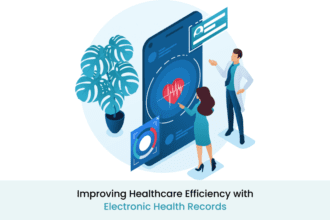
As we step into the dynamic realm of 2024, a robust cloud strategy stands as the linchpin for businesses navigating the ever-evolving technological landscape. In this article, we will explore essential insights to shape a purposeful and effective cloud strategy tailored to meet the unique needs of your business.
Cloud Strategy Development Tips
With the right strategies, you can plan a successful cloud app development. Here are the top tips that you need to know about.
Understanding Business Goals
The foundational step in crafting a successful cloud strategy is aligning it with overarching business objectives. Whether you aim to streamline operations, enhance customer experiences, or drive innovation, a well-crafted cloud strategy should serve as a strategic enabler to achieve these goals.
Diversification with Multi-Cloud Approach
Diversifying your cloud portfolio through a multi-cloud strategy is a prudent approach. This involves leveraging services from various providers, fostering flexibility, mitigating risks, and optimizing costs by selecting the most suitable services for specific business requirements.
Security: A Non-Negotiable Priority
Security is paramount in any cloud strategy. Prioritize it at every level by utilizing advanced security services offered by cloud vendors. Implementing best practices such as encryption and access management and maintaining vigilance against emerging threats through regular audits fortify your cloud strategy against potential risks.
Robust Data Governance and Compliance
Establishing robust data governance practices is critical for ensuring the confidentiality, integrity, and availability of data. Compliance with industry regulations, particularly in sectors like healthcare and finance, where stringent standards are in place, must be a central focus of your cloud strategy.
Embracing Serverless Architecture
To simplify operations and enhance scalability, consider embracing serverless architecture. This empowers developers to focus on coding without the burden of managing servers, resulting in optimized costs by charging only for actual usage.
Automation and DevOps Practices
Automation and DevOps practices play a pivotal role in streamlining processes. By automating tasks and fostering collaboration between development and operations teams, your cloud strategy can accelerate software delivery, improve reliability, and enhance repeatability.
Cost Optimization Strategies
Maintaining a vigilant eye on cloud costs is crucial. Regularly monitoring and optimizing costs through tools provided by cloud vendors help analyze usage patterns, identify underutilized resources, and implement cost-saving measures, ensuring a lean and efficient infrastructure.
Integration of Edge Computing
To address the demands of IoT devices and low-latency applications, integrate edge computing into your cloud strategy. Placing computing resources closer to end-users or devices significantly improves performance and reduces latency, resulting in an enhanced overall user experience.
Resilience and Disaster Recovery Planning
Designing your cloud architecture with resilience in mind is fundamental. Implement robust disaster recovery plans to ensure business continuity in the face of unforeseen events. Utilize geographically distributed resources and backup strategies to minimize the impact of potential disruptions.
Continuous Learning and Adaptation
Fostering a culture of continuous learning within your organization is key. The dynamic nature of the cloud landscape requires staying updated on emerging technologies. Regularly revisiting and adapting your cloud strategy enables you to leverage new features and stay ahead in the competitive landscape.
Future Trends in the Cloud Computing Sector
As the demand for cloud application development companies rises, several key trends will stand out in 2-24 and in the future.
Edge Computing Integration
The rise of edge computing marks a significant shift in cloud architecture. Instead of relying solely on centralized cloud servers, edge computing brings processing closer to the data source. This approach enhances real-time processing capabilities, reduces latency, and supports applications that demand instant responses, such as IoT devices and autonomous vehicles.
Multi-Cloud and Hybrid Cloud Strategies
Organizations are increasingly adopting multi-cloud and hybrid cloud models to diversify their infrastructure and mitigate risks. This trend allows businesses to leverage services from multiple cloud providers, optimizing performance, cost, and flexibility. Hybrid cloud solutions, combining on-premises infrastructure with public and private cloud resources, offer a balanced approach catering to specific business needs.
AI and Machine Learning Integration
The intersection of cloud computing and artificial intelligence (AI) is a transformative trend. Cloud platforms are integrating robust AI and machine learning services, empowering businesses to harness advanced analytics, predictive modeling, and automation. This convergence enhances data-driven decision-making and facilitates the development of intelligent applications.
Serverless Computing Evolution
Serverless computing, also known as Function as a Service (FaaS), is gaining traction as a cost-effective and scalable paradigm. Developers benefit from focusing solely on code without managing the underlying infrastructure. This trend promotes efficient resource utilization, automatic scaling, and reduced operational overhead, driving innovation in application development.
Containerization and Kubernetes Orchestration
Containers have become a cornerstone for deploying and managing applications in the cloud. Kubernetes, an open-source container orchestration platform, is widely adopted for automating containerized application deployment, scaling, and management. This trend streamlines development workflows, fosters portability, and ensures consistent application performance across diverse cloud environments.
Cybersecurity and Compliance Prioritization
With the increasing reliance on cloud services, cybersecurity and compliance have taken center stage. Cloud providers are investing heavily in robust security measures, encryption protocols, and compliance certifications to address data protection concerns. Organizations are also placing a heightened emphasis on implementing security best practices to safeguard their digital assets in the cloud.
Quantum Computing Exploration
While still in its early stages, the cloud computing landscape is witnessing experimentation with quantum computing capabilities. Cloud providers are exploring ways to integrate quantum processors into their services, potentially unlocking unprecedented computational power for solving complex problems in fields like cryptography, optimization, and drug discovery.
Sustainable Cloud Practices
Environmental consciousness is influencing cloud computing trends, with a growing emphasis on sustainability. Cloud providers are investing in renewable energy sources, optimizing data center efficiency, and adopting eco-friendly practices to minimize the environmental impact of cloud infrastructure.
Wrapping Up
A successful cloud strategy demands a comprehensive and forward-thinking approach. By aligning with business goals, prioritizing security, embracing innovation, and maintaining adaptability, organizations can leverage the full potential of the cloud to drive growth and resilience in an increasingly digital world.








